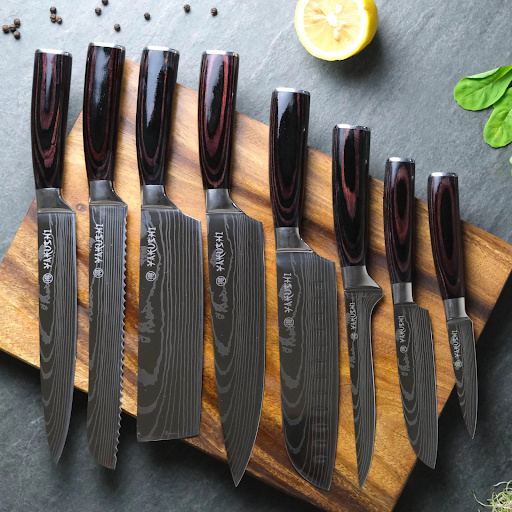When it comes to cooking, one of the most essential tools in any kitchen is a good set of knives. Whether you’re a professional chef or a home cook, having the right cooking knife set can make a world of difference in your culinary endeavors. But with so many options available, how do you choose the best cooking knife set for your needs? In this ultimate guide, we’ll explore the key factors to consider when selecting the perfect knife set for your kitchen.
Determine Your Cooking Needs
The first step in choosing the best cooking knife set is determining your specific cooking needs. Are you an aspiring home chef who enjoys experimenting with various cuisines, or do you prefer simpler, everyday cooking? Different knife sets are designed for different purposes, so understanding your cooking style is crucial.
For versatile cooking, a comprehensive knife set that includes a chef’s knife, a bread knife, a paring knife, and other essential blades is ideal. On the other hand, if you have a particular culinary focus, such as Japanese cuisine, a specialized knife set may be more suitable.
Consider the Types of Knives
A well-rounded cooking knife set should include various knife types, each with its own purpose. Here are some common knives to look for:
- Chef’s Knife: A versatile, all-purpose knife for chopping, slicing, and dicing.
- Paring Knife: Ideal for precision tasks like peeling and trimming.
- Bread Knife: Features a serrated edge for cutting through crusty bread without crushing it.
- Utility Knife: Handy for miscellaneous tasks in the kitchen.
- Santoku Knife: A Japanese-style knife similar to a chef’s knife, excellent for precision cutting.
- Boning Knife: Designed for deboning meat and poultry.
- Steak Knives: Perfect for cutting through cooked meats at the table.
Knife Material Matters
The material of good kitchen knives plays a crucial role in their performance and durability. There are generally two primary types of knife materials: stainless steel and high-carbon steel.
Stainless Steel: These knives are resistant to staining and rust, making them relatively low-maintenance. Nevertheless, they may demand more regular sharpening.
High-Carbon Steel: Known for their sharpness and edge retention, many professional chefs prefer high-carbon steel knives. However, they need more care to avert rust.
Ultimately, the choice between stainless steel and high-carbon steel depends on your personal preferences and maintenance commitment.
Handle Comfort and Design
The comfort and design of the knife handles are often overlooked but are equally important. A comfortable handle allows for extended use without fatigue. Handles come in different materials, including wood, plastic, and metal. It’s essential to choose a handle that feels comfortable in your hand and provides a secure grip.
Full Tang vs. Partial Tang
The tang of a knife refers to the extension of the blade into the handle. There are two primary types: full tang and partial tang.
Full Tang: The blade extends through the handle, providing durability and balance. Full tang knives are generally of higher quality and are less likely to break.
Partial Tang: In partial tang knives, the blade extends only partially into the handle. While these knives are typically less expensive, they may not be as durable as full-tang knives.
For long-lasting quality and balance, it’s recommended to choose a knife set with full tang blades.
Set Size and Storage
Consider the number of knives you need in your set. While larger sets offer more versatility, they can also be overwhelming. Smaller sets may be more manageable for home cooks. Additionally, check if the set includes a storage block or magnetic strip to keep your knives organized and safe.
The Bottom Line
Choosing the best cooking knife set requires thoughtful consideration of your cooking needs, the types of knives included, the material, handle design, tang type, set size, and your budget. While the decision may seem daunting, selecting the right knife set will greatly enhance your culinary experience.


